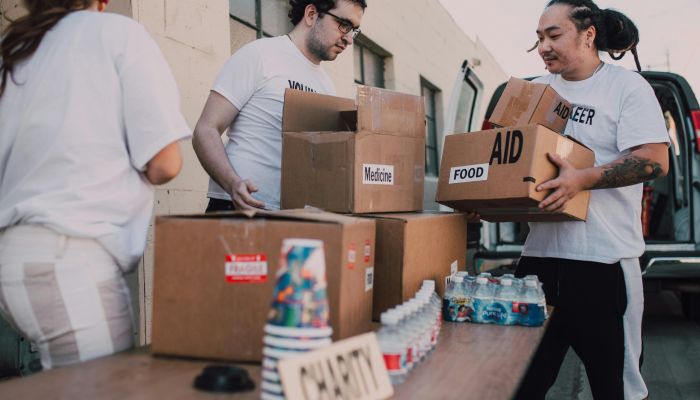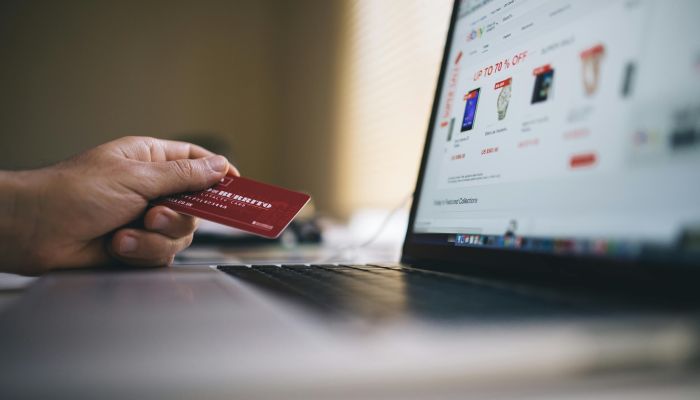5 Ways To Raise Money for Special Needs Equipment

- Raising money for special needs equipment may seem challenging, but with the right strategies, it can be successful and rewarding.
- There are various ways to raise money for special needs equipment, including traditional approaches and innovative digital techniques.
- It’s important to maintain good communication by regularly updating donors on the campaign’s progress and how their donations are being used.
It’s never easy to ask for money, but sometimes, we find ourselves in situations where we could use some help. This can be especially true if your child requires special needs equipment.
Specialized tools, from mobility aids to communication devices, enhance independence, safety, and quality of life, but the associated costs can be staggering. The good news is there are options.
Raising money for special needs equipment can be life-changing for individuals and families who rely on adaptive tools for daily living.
With the right planning, storytelling, and community engagement, fundraising can bridge the financial gap and provide access to these vital resources.
1. Crowdfunding Campaigns

Crowdfunding allows you to reach a broad audience, making it easy for people to contribute even small amounts, which can add up to be significant funding.
Selecting the right platform is essential to ensure the money donated goes into the right hands. Many crowdfunding sites take a percentage of donations, so checking the small print is vital.
Here’s a list of popular crowdfunding campaign sites, including the number one consideration for each:
- GoFundMe: Each donation has a transaction fee of 2.9% plus $0.30 taken out of it immediately.
- Kickstarter: If your project is successfully funded, the following fees will be collected from your funding total: Kickstarter’s 5% fee and payment processing fees (between 3% and 5%).
- Fundly: Once you start receiving donations, their payment partner, Stripe, charges 2.9% plus 30 cents per transaction for credit card processing fees.
My best tip for crowdfunding campaigns is to share personal stories or videos to create an emotional connection. Remember to share this with your local community on social media to encourage your friends to get involved.
2. Community Fundraising Events

They say it takes a village to raise a child, and sometimes it takes the whole community.
Fundraising events bring people together for a common cause. Raising money and awareness about the need for special needs equipment can lead to long-term support from your community.
Examples of community fundraising events include:
- Charity Runs/Walks: Partner with local businesses and volunteers to host a charity race.
- Bake Sales or Craft Fairs: You can have volunteers bake goods or create handmade crafts, and the profits will go to your cause.
- Benefit Dinners or Luncheons: Host a dinner where a portion of the ticket price or donations go towards the cause. (Tip: to reduce costs, seek sponsorships from local restaurants or event spaces.)
- Silent Auctions: Organize an auction with donated items from local businesses.
- Penny Wars: Have classes at a local elementary school compete to see who can collect the most pennies, with the proceeds going to your fundraiser.
Overcoming burnout as a special needs parent is crucial, so remember to reach out to your community when you need it most.
3. Grants and Financial Aid

Many companies are willing to support community causes, especially those aligned with corporate social responsibility goals.
I recommend researching and applying for grants designed to support individuals with special needs, like those from the Maggie Welby Foundation or other nonprofits.
While applying for grants can be competitive, securing one can significantly reduce the financial burden of purchasing adaptive equipment, so it’s worth investing the time and effort to pursue these opportunities.
Here are a few tips to consider when writing a grant:
- Research available grants from foundations that focus on special needs.
- Clearly define the needs and specific challenges faced by the child with special needs.
- Give detailed information about the equipment you need.
- Be specific about how much money you request, including funds already collected.
- Always proofread your grant before sending it, ensuring it’s error-free.
Finally, you should check with your insurance company to see what they cover so you know how much you’ll need out of pocket.
For example, Medicare Part B11. Durable medical equipment (DME) coverage. Medicare. https://www.medicare.gov/coverage/durable-medical-equipment-dme-coverage covers medically necessary durable medical equipment (DME) like wheelchairs and scooters if your Medicare-enrolled doctor prescribes it. However, there are considerations, so it’s vital you speak directly with your insurance to see what you qualify for.
4. Social Media Fundraisers

I’ve seen many fundraisers on social media, including Facebook. One of the best parts of collecting money for special needs equipment this way is that Facebook takes no percentage.
You can collaborate with schools, churches, or local community organizations to host joint fundraisers or awareness drives. In addition, you can partner with a local gym for a charity workout session, the proceeds of which go toward purchasing the special needs equipment you require. (I have a friend who did this, and it was a huge success!)
You can also start a hashtag campaign to encourage people to donate. Remember to create short, shareable videos explaining your cause and updating people on the progress.
5. Online Merchandise Sales

You can also host a virtual garage sale through Facebook Marketplace or eBay, with the proceeds going to the special needs equipment. For example, if your kids have outgrown clothes or baby gear, you can sell items online to help reach your goal.
Also, consider selling homemade crafts or products online, like T-shirts, bracelets, or other personalized goods. If you start a hashtag, you can put it on your products!
Selling merchandise is a win-win: people get a tangible item to show their support, and you raise money for the equipment needed. Plus, whenever someone wears or uses the product, it raises awareness for your cause.
Some examples of merchandise to sell are:
- T-shirts
- Hoodies
- Water bottles
- Car magnets
- Tote bags
- Stickers
- Buttons
FAQs
What are common mistakes to avoid when raising funds for special needs equipment?
Common mistakes when raising funds for special needs equipment include:
- Lack of a clear goal: If your fundraiser doesn’t have specific goals or a detailed plan, it may confuse potential donors and lead to a disorganized effort.
- Inconsistent communication: It’s essential to keep in contact with donors even after the campaign ends so you can let them know how their contributions are being used.
- Setting unrealistic timelines: If you set an overly ambitious goal that is hard to achieve, it can discourage donors or lead to a sense of failure if you don’t reach your goal.
- Overlooking the importance of storytelling: Don’t forget to share personal stories to help connect with potential donors and encourage more engagement and donations.
Remember, you can easily overcome any hiccups along the way by focusing on your mission!
What are the best strategies for reaching out to potential donors for special needs equipment fundraising?
Here are some of the best strategies to engage potential donors and build long-term relationships:
- Personalize your approach. Share personal stories about the individual benefiting from the equipment, highlighting how the equipment will improve their lives and creating an emotional connection to motivate donors.
- Leverage social media and online platforms. Actively promote your campaign on social media, email, and your website using engaging content like videos, infographics, and personal stories to help increase visibility.
- Follow up and build relationships. Engage with donors regularly, thank them personally, and provide updates on the progress of the fundraising campaign and the impact of their contributions. Remember, building a solid connection encourages future support.
What are the tax implications for donations made to special needs equipment fundraising efforts?
If the fundraising is for an individual’s personal need (e.g., raising money through a platform like GoFundMe), the donations are typically not tax-deductible.
The IRS does not consider donations to individuals as charitable contributions, even if the money is for a good cause. You can refer to the Internal Revenue Service22. Charitable contribution deductions. Internal Revenue Service. https://www.irs.gov/charities-non-profits/charitable-organizations/charitable-contribution-deductions (IRS) website for more specific tax implications.
References
- Durable medical equipment (DME) coverage. Medicare. (n.d.). https://www.medicare.gov/coverage/durable-medical-equipment-dme-coverage
- Charitable contribution deductions. Internal Revenue Service. (n.d.). https://www.irs.gov/charities-non-profits/charitable-organizations/charitable-contribution-deductions

Related Posts

Eye Conditions and Syndromes, Visual Impairment
Neuralink Announces Plans to Restore Sight to the Blind with Brain Chip
Elon Musk’s company Neuralink has announced plans to begin human trials of its new “Blindsight” brain chip by the end of 2025.

Special Needs
5 Spring Cleaning Tips for Families of Children with Disabilities
Spring cleaning is an opportunity to create a more accessible, organized, and supportive space for your child with disabilities. Declutter, deep clean, and refresh!

Visual Impairment
The Gift of Understanding: How a Young Child Helps His Blind Father Navigate Life
When a parent is blind, it’s natural for people to wonder how their sighted child will adapt. Will they struggle to understand their parent’s needs? Will they feel burdened by...